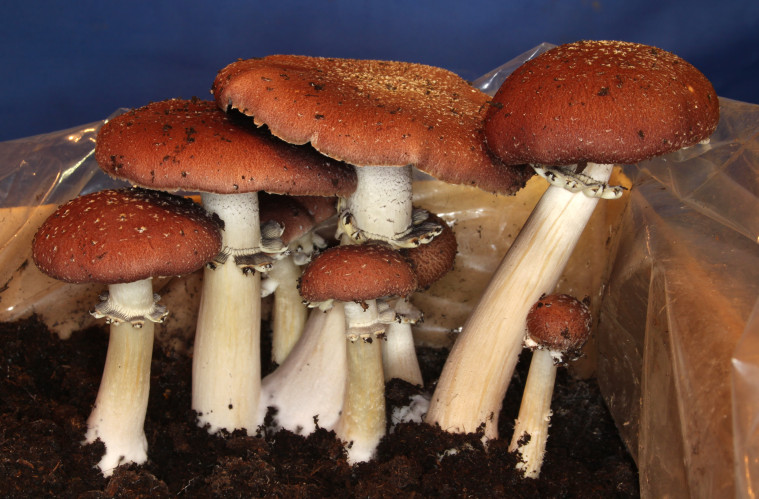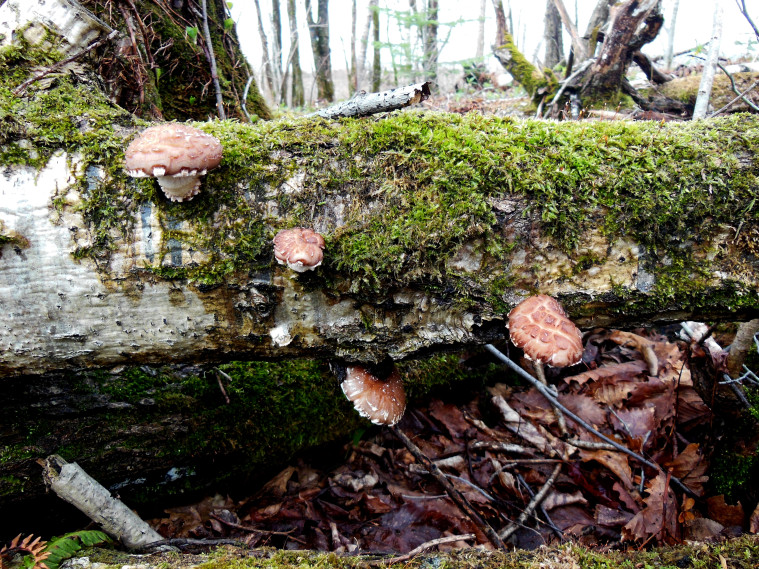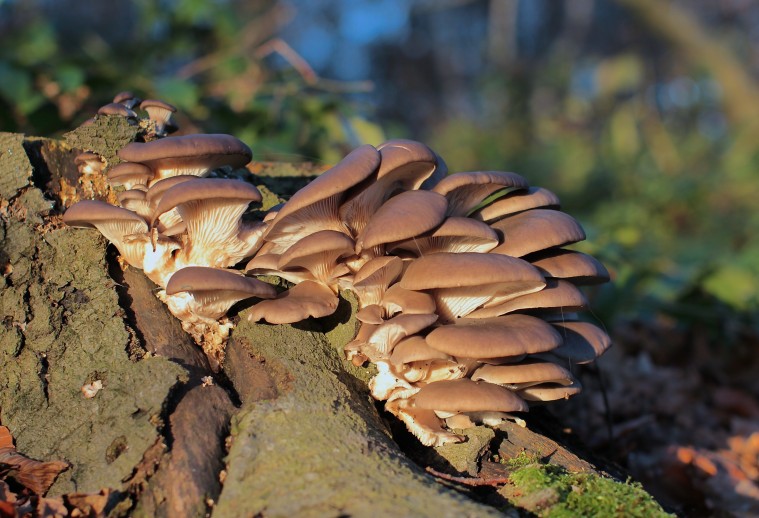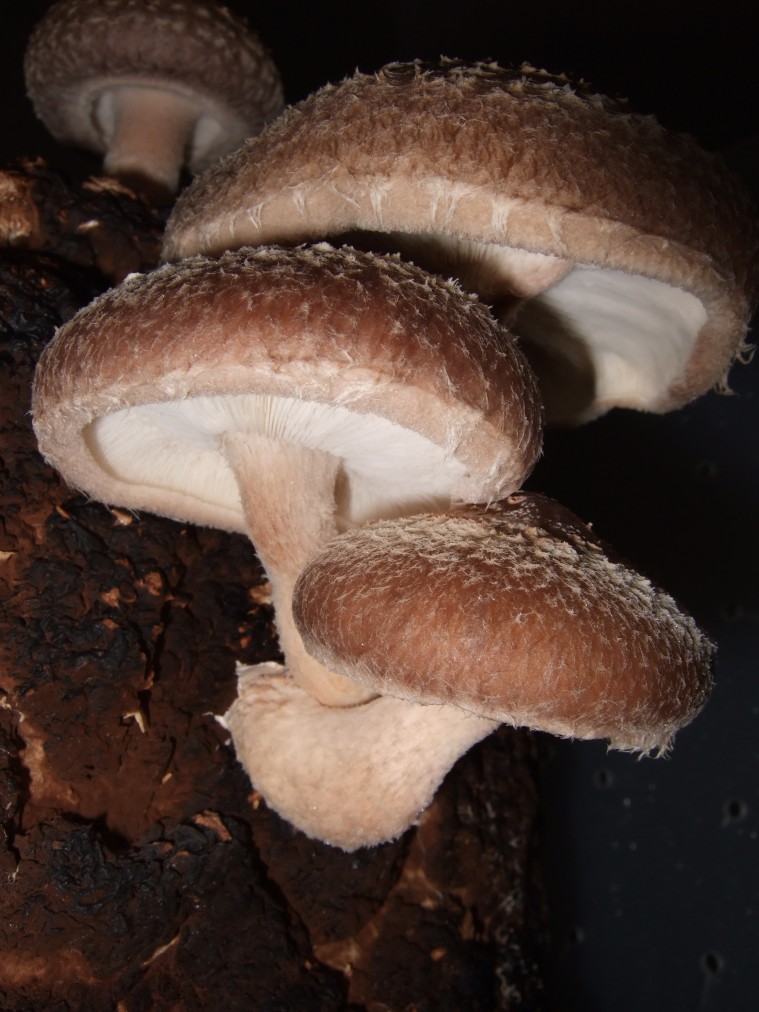Yes! You, too, can grow mushrooms, even if you have limited space. In fact, mushrooms are great additions to any small urban garden. If growing herbs or tomatoes at home is something you enjoy, then adding mushrooms to the mix is no problem.
Many people harvest wild mushrooms, but this can be tricky business unless you’re very skilled at identifying mushroom varieties. It’s a safer bet to grow mushrooms at home. Here are three mushrooms anyone can grow in limited space – with tips on how to grow them: Shiitake, Oyster, and King Stropharia, also called Wine Cap.
What You Need to Grow Mushrooms
There are some basic supplies you’ll need to start a mushroom garden. These are necessary for any mushroom growing and easy to keep in a small place.
Spawn
Spawn is the mushroom version of seeds. It carries the mushroom mycelium that allows fungi to grow. Beginner mushroom growers typically get spawn online or via a catalog. However, if you live in a big city, you may be able to find a mushroom-supply shop.
Oyster mushroom mycelium.
Substrate
The substrate is what mushrooms grow on; this includes logs, straw, wood chips. The mycelium will take over and spread until it has enough momentum for the mushrooms to fruit. Mushrooms will often fruit several times from the same substrate until they have broken down the specific growing medium. The broken down medium then becomes excellent compost for growing plants.
Shiitake mushrooms are growing on a log.
Grow Mushrooms by Type
It is important to consider the room and shade available when choosing what type of mushroom to grow. Here are three mushroom varieties that are suited to grow in small spaces.
1. Oyster Mushrooms
Because oyster mycelium is vigorous and quickly overtakes its substrate, it is one of the easiest mushrooms to grow.
The best way to start oyster mushrooms is to place the spawn in used coffee grounds. Coffee shops and cafes give them away for free, and the coffee-making process kills off any other organisms that might compete with the mushroom mycelium.
Mix the grounds with the oyster mushroom mycelium in a bucket or storage tub and drill some air holes for circulation. Keep it in a dark place like a closet and keep the grounds moist by misting them with water.
In about three to four weeks when the mycelium has overtaken the coffee grounds, move the container to a sunny location and continue misting, the ground needs to stay moist.
After about a week of sunlight, the oyster mushrooms should begin to fruit. After harvesting these fruiting bodies for food (the part of the fungus that emerges and releases spores and that we usually identify as the mushroom), add more coffee grounds and move the mycelium and substrate back to the dark space to try for another harvest. Just repeat the process over again until the mycelium runs out of food.
2. Shiitake Mushrooms
Shiitake mushrooms have a delicious, earthy flavor. They are best cultivated in small, freshly-cut logs or branches with diameters of about 4 to 8 inches. These logs can be easily placed in any backyard.
First, drill holes in the logs, fill them with spawn (shiitake plug spawn can be easily purchased online), and seal the holes with hot wax. Place the logs in a shady area, keep them relatively moist (do not let them completely dry out) and wait about six months.
After six months, the white mycelium should start to form at the ends of the logs, this means the shiitake mushrooms are ready to fruit. One can wait for them to fruit naturally or speed up the process by soaking the logs in water for 24 hours.
Shiitake logs will fruit several times over the course of many years. A number of mushrooms one can receive from one log depends on the size of the log (the bigger the log, the more mushrooms).
3. Wine Cap or Stropharia Mushrooms
If shiitake mushrooms are not an option due to lack of space, wine cap mushrooms are a good alternative. These mushrooms can be planted in perennial garden beds or landscape areas.
In the spring, find an area that is about 16 square feet and cover the area with a mixture of fresh hardwood chips and wine cap spawn—you can find the spawn here. A five-pound bag of spawn should be enough. Soak the area thoroughly with water. The mushrooms will sprout in the fall along with your other plants. The mycelium also keeps the soil healthy.
It is important to identify the mushroom one is about to consume as wine caps. Other mushrooms may sprout in your wood chips, and they could be dangerous. Wine caps are reddish-brown in color with dark grills and a fibrous stem. With that being said, it is important to consult a mushroom identification guide.






